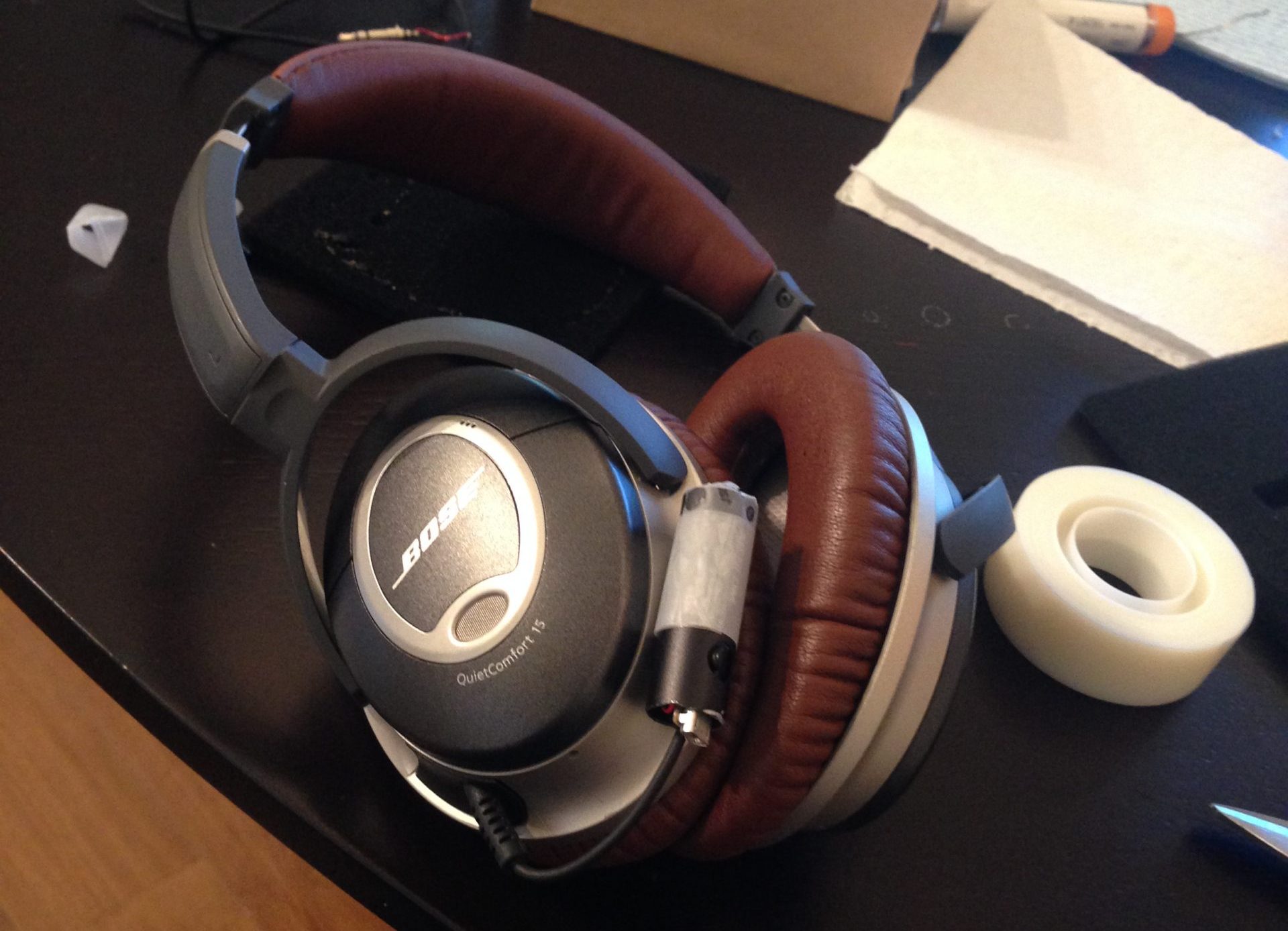
Bose QC15 turns out to be a great headphone, especially in the noise cancelling area. When I was doing experiment in a lab, the sometimes I unplug the wires and just use it as a noise-cancelling headphone and I feel so free! Then what if I make a Bluetooth connection to the qc15? It turns out to be pretty easy!
Notice: it is on your own risk to do the following experiment. Only implement the following steps when you feel confident enough.
- Buy a Bluetooth receiver (there are lots of Bluetooth receivers on Amazon or Ebay). What I got was a LANMU receiver. (https://www.amazon.com/gp/product/B01CXS9G2Y/ref=oh_aui_detailpage_o07_s00?ie=UTF8&psc=1). I chose this one because it is small in size, however you can buy anyone you like as long as it works.
- Dissemble the receiver, then cut your qc15 headphone wires and solder it on the receiver terminals. Be careful about the color code of the polarity. For my particular case, red wire goes to “right+”, green wire goes to “left+”, and the only one left is the ground, which shows “GND”. And also, be extremely careful not to short any wires. Shorting any wire (for example left channel and right channel) might probably damage your equipment! Below is a picture with all the connections.
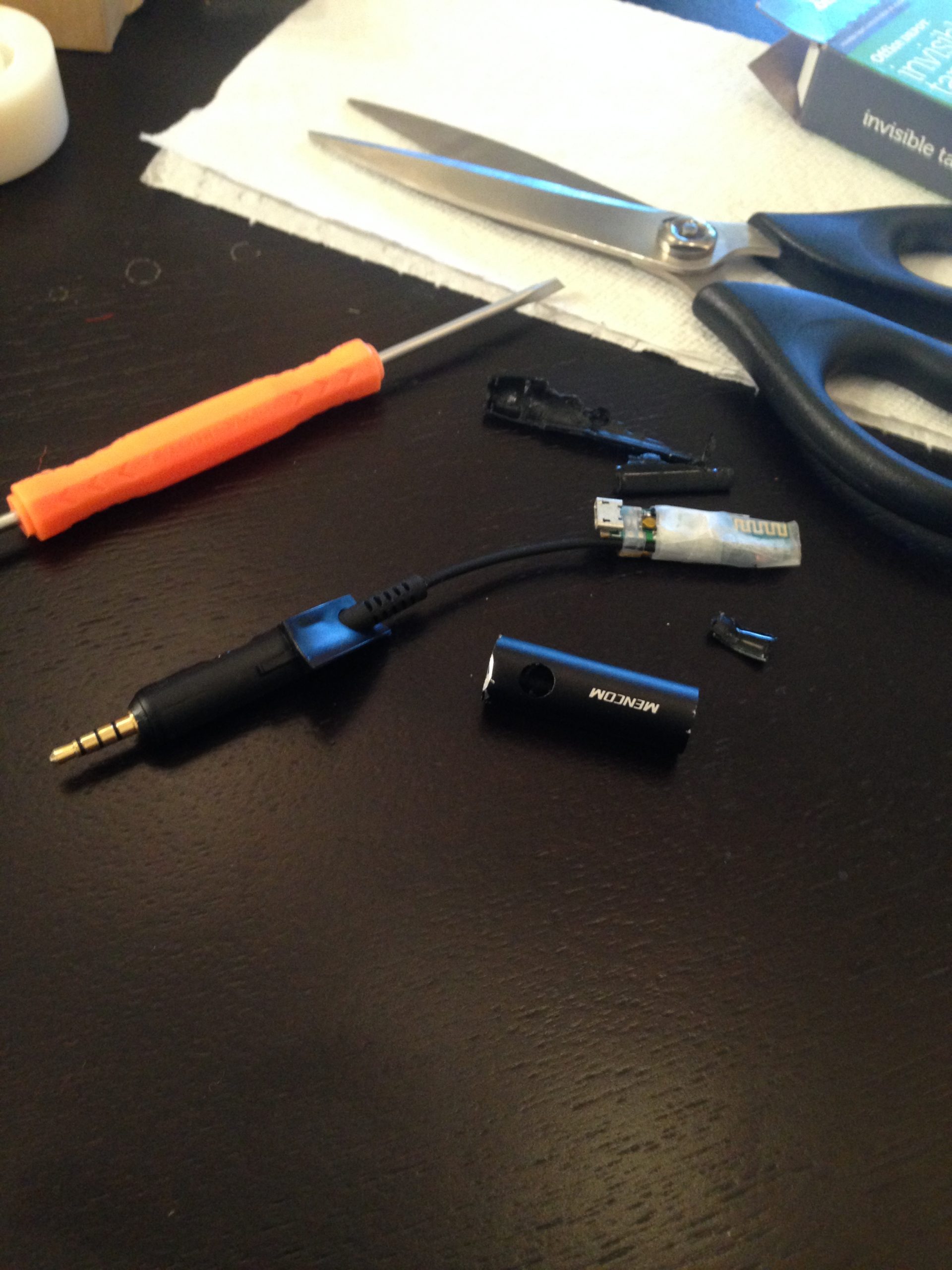
- Put double-side tape on the receiver and headphone edge, and try to make it look as neat as possible. It’s fairly easy to make your headphone look ugly with this extra part 🙂
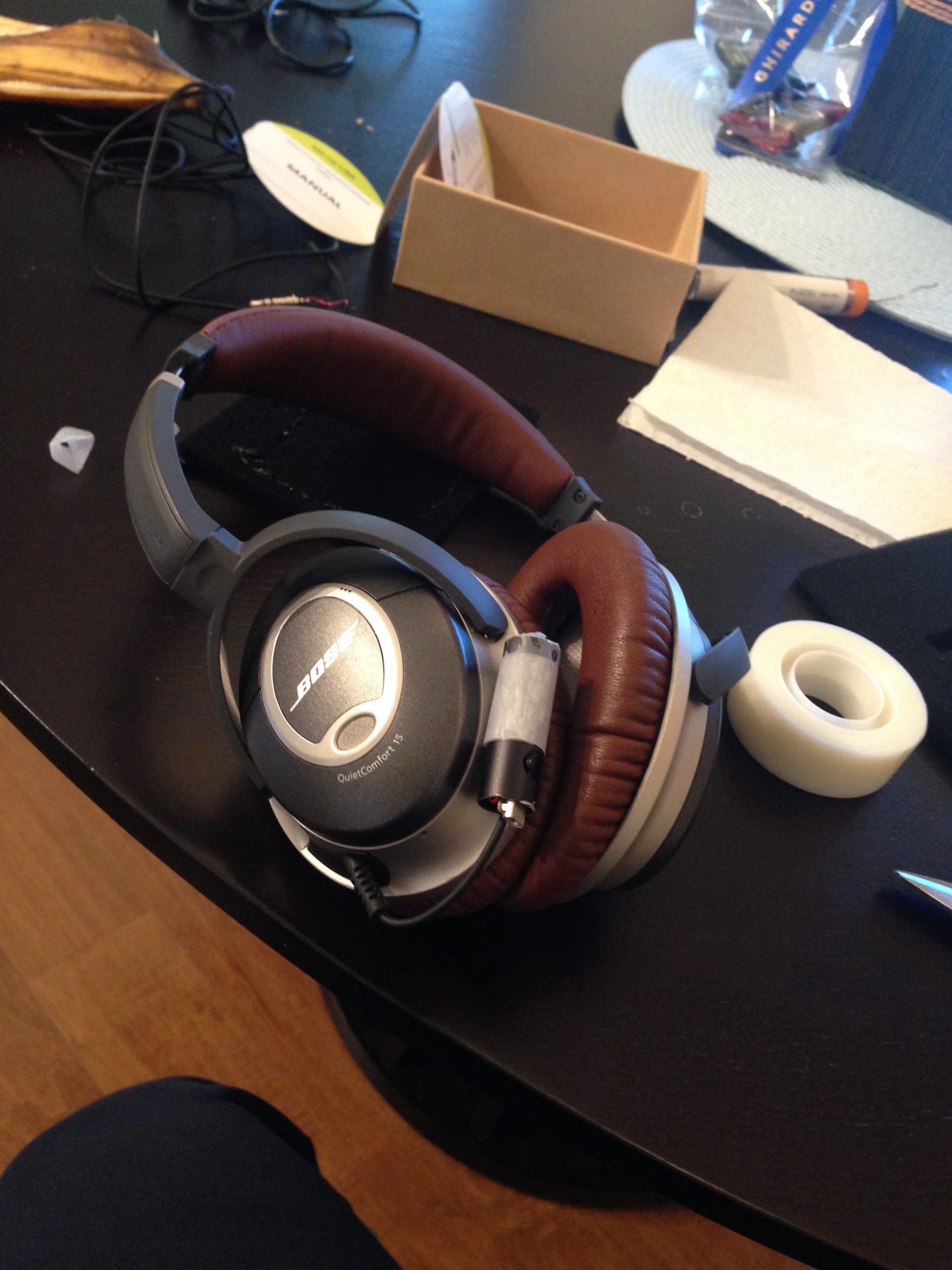
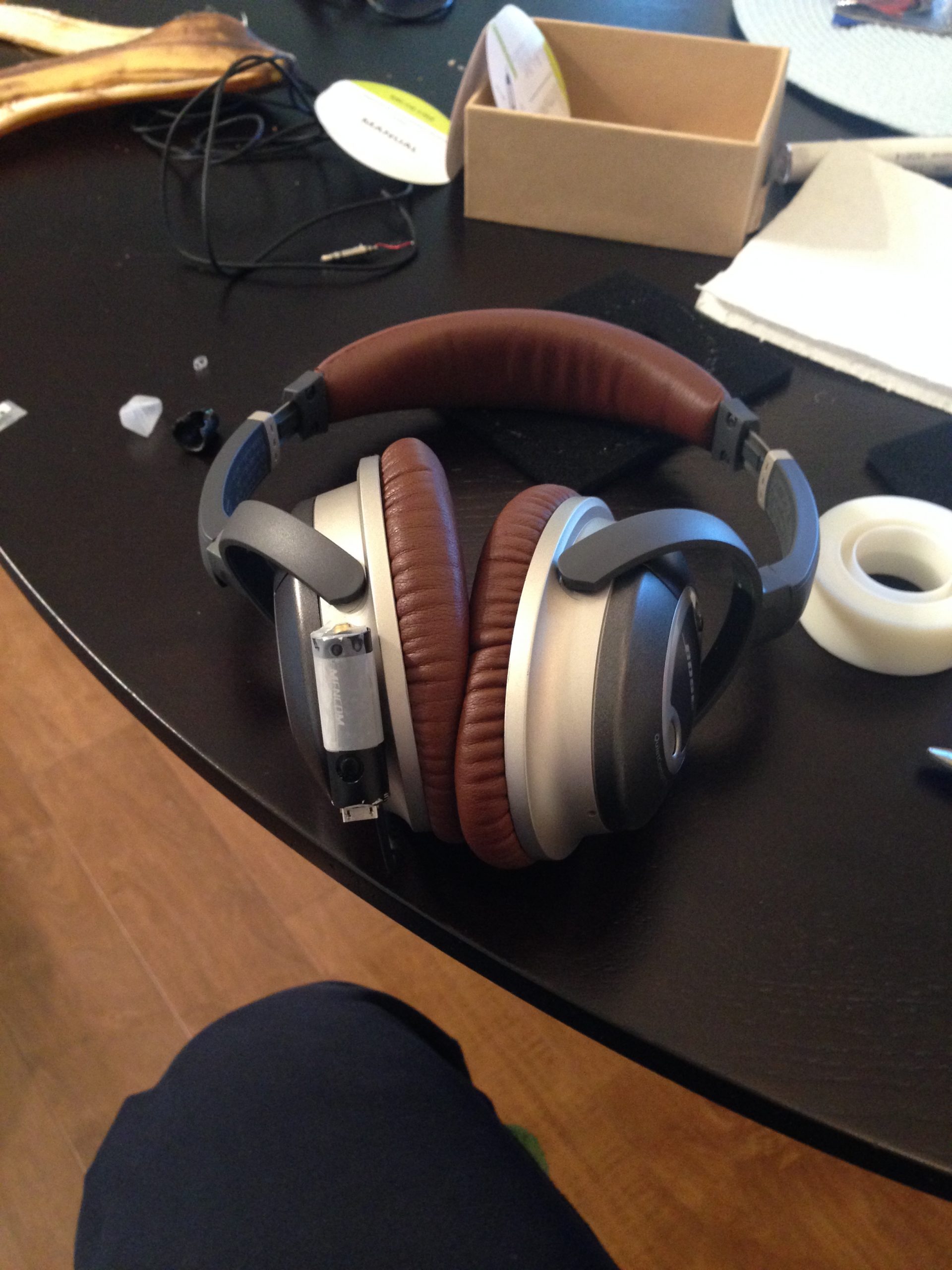
- Turn on the Bluetooth on your phone as well as the receiver, and enjoy the music! (You can see that the device is connected and there is also a battery status indicator of the receiver on the upper right corner of the iPhone! )
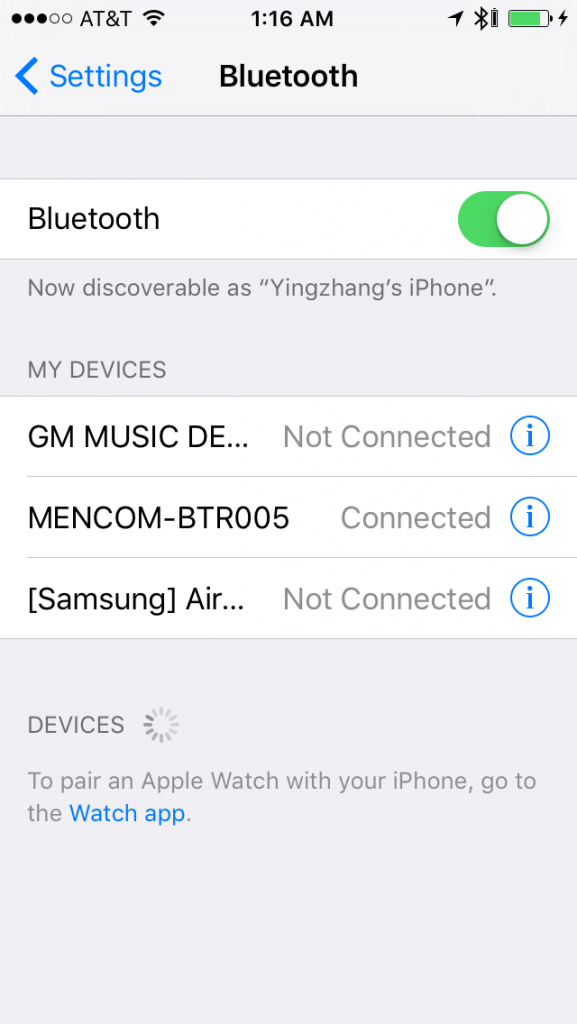
This is a pretty simple and straightforward project. Actually when I was doing this project, Bose QC35 just came out, which is equipped with more advanced noise-cancelling technology and Bluetooth connection. That is a really fancy headphone, though it cost quite a lot.
For the next step of this project, I might want to integrate the Bluetooth receiver and a rechargeable battery into the qc15 to make it more “integrated”. The basic idea is to put an 3.7 rechargeable AAA battery inside the headphone, then use dc-dc converter to step down 3.7v to 1.5 which can power the headphone circuit. Meantime, 3.7V can power the Bluetooth receiver, and then add a charging circuit for the 3.7 battery.
This second step of this project might be explained in the future post.
-Yingzhang Dong
Austin, TX
2016
This article is originally written by Yingzhang Dong, and please note source if you would like to quote.